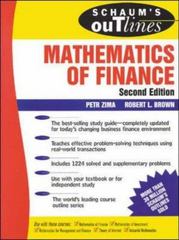Problem 1 (20 points) You are working on the analysis of the credit risk of three major airlines: American Airlines (American Airlines Group, Inc. (AAL)), United Airlines (United Continental Holdings, Inc. (UAL)), and Delta (Delta Air Lines, Inc. (DAL)). You are estimating the probability of default for a given firm using the options model of default risk where this probability is given by: Prob Default = N(-dd) dd In(A/F) + (u - 0.502)T OVT While implementing this model, you decided to consider the risk of default over a one-year horizon and set the face value of the debt in one year as the current book value of the debt. Your analysis was based on March 29 2019. On this date, you collected the following information on the three companies (based on current market values and the last financial statements - all values in U.S. dollars): American Delta United Equity (Market, SB) 39.3 22.8 Debt (Book, SB) 34.0 17.6 14.7 15.6 You also decided to assume that h = 5%. One key missing step in your analysis is the estimation of the asset volatility of each company. You need to separately estimate the equity volatility for each of these companies. Download the file "FIN5600 Final Exam Data File" from Moodle. In the worksheet titled "QI (Data)." you will find data on daily stock prices for the year ending on March 29 2019 (between March 30 2018 and March 29 2019). You should have "approximately" 250 data points. A. Estimate the daily return for each day using daily percentage changes in the adjusted price. B. Compute the standard deviation of daily returns for each company. C. Under the assumption that daily returns are statistically independent across different days, estimate the standard deviation of annual equity returns (250 trading days). D. Using the simple approach covered in class, estimate the asset volatility and market value of assets for each company. E. Calculate the distance-to-default (dd) and the probability of default for each company. Problem 1 (20 points) You are working on the analysis of the credit risk of three major airlines: American Airlines (American Airlines Group, Inc. (AAL)), United Airlines (United Continental Holdings, Inc. (UAL)), and Delta (Delta Air Lines, Inc. (DAL)). You are estimating the probability of default for a given firm using the options model of default risk where this probability is given by: Prob Default = N(-dd) dd In(A/F) + (u - 0.502)T OVT While implementing this model, you decided to consider the risk of default over a one-year horizon and set the face value of the debt in one year as the current book value of the debt. Your analysis was based on March 29 2019. On this date, you collected the following information on the three companies (based on current market values and the last financial statements - all values in U.S. dollars): American Delta United Equity (Market, SB) 39.3 22.8 Debt (Book, SB) 34.0 17.6 14.7 15.6 You also decided to assume that h = 5%. One key missing step in your analysis is the estimation of the asset volatility of each company. You need to separately estimate the equity volatility for each of these companies. Download the file "FIN5600 Final Exam Data File" from Moodle. In the worksheet titled "QI (Data)." you will find data on daily stock prices for the year ending on March 29 2019 (between March 30 2018 and March 29 2019). You should have "approximately" 250 data points. A. Estimate the daily return for each day using daily percentage changes in the adjusted price. B. Compute the standard deviation of daily returns for each company. C. Under the assumption that daily returns are statistically independent across different days, estimate the standard deviation of annual equity returns (250 trading days). D. Using the simple approach covered in class, estimate the asset volatility and market value of assets for each company. E. Calculate the distance-to-default (dd) and the probability of default for each company







